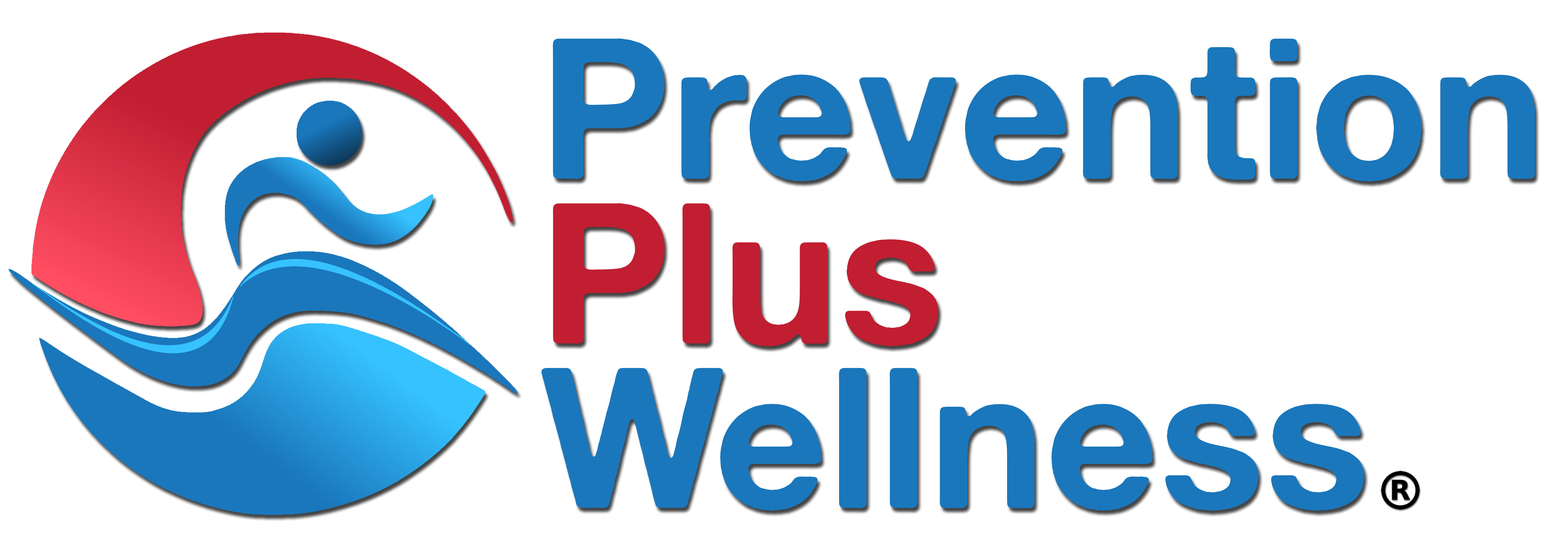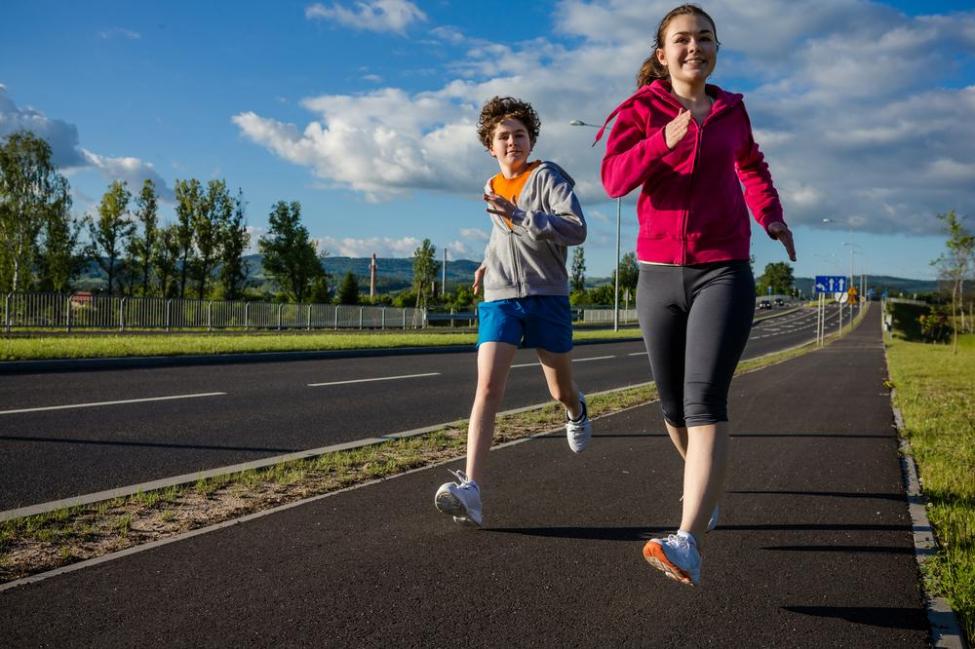Introduction
The US Department of Health and Human Services has recommended youth ages 6-17 years old get 60 minutes or more of combined moderate and vigorous physical activity each day.
Physical activity, including playing sports, is critical to both physical and brain development and health of children and adolescents, and long-term helps prevent chronic disease like obesity, heart disease and type 2 diabetes in adulthood (https://www.hhs.gov/fitness/be-active/physical-activity-guidelines-for-americans/index.html).
The content for this article was drawn from a webinar provided by Prevention Plus Wellness, LLC earlier in November 2019. A link to the recorded webinar is provided at the end of this article.
The objectives of this article are twofold:
- Explore research assessing physical activity, exercise and sport on later substance use and mental health of youth and young adults, and
- Examine evidence-based physical activity interventions for influencing youth substance use and mental health.
Physical Activity & Youth Substance Use Research
A review of published longitudinal and intervention research, and research reviews, examining physical activity and youth substance use produced the following three findings.
First, physical activity and sports are associated with less tobacco and illicit drug use among youth over time. Research supporting this conclusion included a:
- 2016 study in Pediatrics showing adolescents in sports/exercise had lower odds of nonmedical prescription opioid and heroin use (https://pediatrics.aappublications.org/content/138/2/e20160677.abstract)
- 2014 review of research in Addictive Behaviors showing adolescent sports participation was associated with reduced illicit drug use, especially non-cannabis use (https://www.sciencedirect.com/science/article/pii/S0306460313003766)
- 2018 review of research in Progress in Preventive Medicine indicating that physical activity is negatively associated with tobacco and other drug use, especially among adolescents and young adults (https://journals.lww.com/progprevmed/Fulltext/2018/05000/Physical_Activity_and_the_Development_of_Substance.2.aspx)
- 2018 review of research in the Journal of Substance Use & Misuse concluding that physical activity interventions may decrease substance use in teens (https://www.tandfonline.com/doi/abs/10.1080/10826084.2018.1452338)
Second, physical activity and sports are associated with increased alcohol and binge drinking and maybe cannabis use, particularly among youth in some competitive sports. This conclusion was supported by three publications including a:
- 2015 longitudinal study in International Review for the Sociology of Sport indicating 12th graders participating in competitive sports had greater odds of binge drinking later in life and participating in high contact sports was associated with binge drinking and marijuana use (https://pediatrics.aappublications.org/content/138/2/e20160677.abstract)
- 2014 review of research in Addictive Behaviors showing adolescent sports participation was associated with increased alcohol use (https://www.sciencedirect.com/science/article/pii/S0306460313003766)
- 2018 review of research in Progress in Preventive Medicine indicating that physical activity is positively associated with current and future alcohol use (https://journals.lww.com/progprevmed/Fulltext/2018/05000/Physical_Activity_and_the_Development_of_Substance.2.aspx)
Third, school-based multiple risk behavior interventions, even a single session, showed reductions in alcohol, tobacco and illicit drug use among youth. Research supporting this finding was a:
- 2018 review of research in the Journal of Substance Use & Misuse concluding that one-time school-based multiple risk behavior interventions reduced youth substance use in teens (https://www.tandfonline.com/doi/abs/10.1080/10826084.2018.1452338)
- 2018 Cochrane Library review of research showing that school-based multiple risk behavior programs for youth ages 8-25 years old affected tobacco, alcohol and physical activity, and maybe illicit drug use and anti-social behavior, with weaker effects for cannabis use, unhealthy diet and sexual risk behaviors (https://www.cochrane.org/CD009927/PUBHLTH_interventions-preventing-multiple-risk-behaviours-young-people)
Evidence-based Substance Use Prevention and Physical Activity Interventions
To identify evidence-based interventions that integrate substance use with physical activity for youth the Results First Clearinghouse Database was searched (10/2019)( https://www.pewtrusts.org/en/research-and-analysis/data-visualizations/2015/results-first-clearinghouse-database).
Results First Clearinghouse, by the Pew Charitable Trust and John D. and Catherine T. MacArthur Foundation, was selected as it is a meta-database of nine evidence-based program registries.
A search of evidence-based programs was conducted using the terms “physical activity”, “sport” and “exercise” as descriptors within the substance use program category and focusing on programs that included youth or young adults.
The key findings from this search included:
- Most evidence-based substance use prevention programs that address physical activity (n=5) targeted and influenced multiple health behaviors. These included two single-session programs (SPORT Prevention Plus Wellness and InShape Prevention Plus Wellness), two programs targeting high school athletes (ATLAS and ATHENA), and one health education curriculum (Michigan Model for Health).
- Four evidence-based programs were designed for outdoors settings. Two were created primarily for American Indians (The Hero Project: Cultural/Adventure Rites of Passage and Project Venture). The other two targeted youth offenders (Wilderness Challenge Programs and Behavior Management through Adventure).
- Only one evidence-based substance use plus fitness program was found for use in elementary schools (Playworks Coach), physical education (New Moves) and smoking cessation (Commit to Quit). In addition, sports interventions for juvenile delinquency were found to have no effect on crime reduction.
Physical Activity & Youth Mental Health Research
A review of published longitudinal and intervention research, and research reviews, examining physical activity and youth mental health yielded the following three findings.
First, physical activity is associated with less mental health disorders and stress and greater cognitive health. Research supporting this finding included a:
- 2018 national study in the Journal of Adolescent Health showing active 13-18 year old youth had lower odds of mood disorder, bipolar II disorder and general psychological stress (https://www.jahonline.org/article/S1054-139X(18)30217-9/fulltext)
- 2010 review of reviews of mental health among children and adolescents in the British Journal of Sports Medicine showing physical activity has potential for reducing depression, small effects on reducing anxiety, improves self-esteem, at least short-term, and perhaps improves cognitive functioning and academic success (https://www.ncbi.nlm.nih.gov/pubmed/21807669)
- 2019 update of the review of reviews cited above of mental health among children and adolescents in the Psychology of Sport and Exercise concluding there is an association between physical activity and cognitive health and performance, and partial evidence of a causal association between physical activity and depression (https://insights.ovid.com/psychology-sport-exercise/psyse/2019/05/000/physical-activity-mental-health-children/19/00024825)
- 2017 longitudinal study of Australian adolescents in Medicine and Science in Sports and Exercise showing bidirectional relations between time in sport and overall mental health (https://europepmc.org/abstract/med/27801745)
Second, certain organized sports may increase risk of alcohol use disorder, bulimia and social and emotional disorders. Research supporting this conclusion included the:
- 2018 national study of 13-18 year old youth in the Journal of Adolescent Health showing vigorous physical several times a week, particularly associated with organized sports, was associated with greater odds of lifetime alcohol use disorder, bulimia, general anxiety disorder and posttraumatic stress disorder (https://www.jahonline.org/article/S1054-139X(18)30217-9/fulltext)
- 2017 longitudinal study of Australian adolescents in Medicine and Science in Sports and Exercise showing bidirectional relations between time in sport and social and emotional problems (https://europepmc.org/abstract/med/27801745)
Third, physical activity may promote mental health among youth populations suffering from certain mental problems. In particular, aerobic physical activity interventions may reduce ADHD symptoms among young children and team sports are associated with better mental health among youth later in life who were exposed to adverse childhood experiences. These studies included a:
- 2015 randomized intervention study in the Journal of Abnormal Child Psychology indicating 31 minutes of before-school aerobic physical activity for children at-risk for ADHD is effective in reducing inattention and moodiness at home and perhaps in school (https://link.springer.com/article/10.1007/s10802-014-9929-y)
- 2019 nationally representative study in JAMA Pediatrics showing youth exposed to adverse childhood experiences participating in team sports was associated with lower odds of depression or anxiety and having current depressive symptoms (https://jamanetwork.com/journals/jamapediatrics/article-abstract/2734743)
Evidence-based Mental Health and Physical Activity Interventions
To identify evidence-based interventions that integrate mental health with physical activity for youth the Results First Clearinghouse Database was searched (10/2019)( https://www.pewtrusts.org/en/research-and-analysis/data-visualizations/2015/results-first-clearinghouse-database).
As mentioned earlier, the Results First Clearinghouse was selected as it is a meta-database of nine evidence-based program registries.
A search of evidence-based programs was conducted using the terms “physical activity”, “sport” and “exercise” as descriptors within the mental health program category and focusing on programs that included youth or young adults.
The key findings from this search included:
- Seven evidence-based mental health programs were identified that addressed physical activity, sport or exercise.
- Of these, two were multi-strategy interventions targeting children or adolescents with ADHD (Children’s Summer Treatment and Challenging Horizons).
- Two other combined mental health and physical activity evidence-based interventions for young and older adults included a multi-health intervention for those with serious mental illness (Solutions for Wellness). The other was a computer-based program for those not using stress management (Transtheoretical Model-Based Stress Management).
- Support was also found for Extracurricular Activities for Social Engagement among school-aged youth and Community Fitness Programs for promoting mental health.
Conclusions
The following conclusions can be drawn from the research and evidence-based programs reviewed linking physical activity and substance use and mental health among youth and young adults.
- Research shows that physical activity and sports may prevent tobacco and illicit drug use, but increase alcohol, binge drinking and maybe cannabis use, particularly for youth participating in some competitive sports.
- School based multiple risk behavior interventions, including those just a single-session in length, may reduce alcohol, tobacco and illicit drug use among youth.
- Most evidence-based substance use prevention programs that included physical activity addressed multiple youth health risks or outdoors strategies.
- Research indicates that physical activity is associated with less mental health disorders and stress and greater cognitive health, but participation in certain organized sports is associated with an increased risk for alcohol use disorder, bulimia and social and emotional disorders.
- Physical activity or team sports may promote mental health among youth populations suffering from certain mental health problems like ADHS and youth exposed to adverse childhood experiences.
- Two evidence-based mental health programs that addressed physical activity targeted children and adolescents with ADHD, while two others were broad-based strategies, including extracurricular activities for school-aged youth and community fitness programs.
Resources
Physical Activity Interventions Impacting Youth Substance Use & Mental Health (Webinar)(Prevention Plus Wellness, LLC, 2019): https://youtu.be/4tw-cD3nwCI
Coach’s Playbook Against Drugs (US Department of Justice): https://www.ncjrs.gov/pdffiles/173393.pdf
Using Sport for Drug Abuse Prevention (United Nations Office for Drug Control and Crime Prevention, 2002): https://www.unodc.org/pdf/youthnet/handbook_sport_english.pdf
Youth Sport Programs that Address Substance Use-An Environmental Scan (Canadian Centre on Substance Abuse, 2016): https://www.ccsa.ca/youth-sport-programs-address-substance-use-environmental-scan
